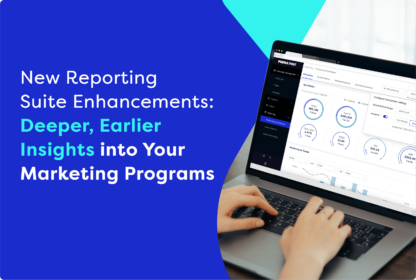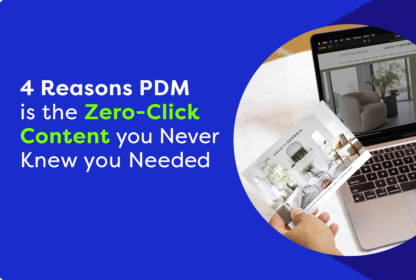Say hello to Q4, typically your busiest and often most lucrative time of year.
This year’s end-of-year selling period has been a doozy. Between the Presidential Elections, the Major League playoffs and World Series, and the other pro sports getting into high gear, consumers may have gotten distracted from holiday shopping.
Considering there are only four weeks between Thanksgiving and Christmas this year, getting consumers’ attention and moving them to action presents a real challenge.
It’s not just about the calendar. There’s a significant online aspect that’s impacting consumers. Realize that each event cited has a digital component, whether shopping via an app, engaging in social media debates about candidates, or being involved with fantasy sports leagues. It can really feel like online all the time.
If they’re not already, consumers will get digitally burnt out, which will thwart online marketing campaign efforts. By early next month, more than two-thirds of consumers anticipate marketing fatigue—feeling overwhelmed by the volume or repetition of brand messages, engaging less, and forming negative perceptions. To get consumers to tune in instead of tuning out this Q4, your brand must reach them in ways without getting lost in the digital chaos.
The Downlow on Digital Fatigue
Consumers were already digitally fatigued even without these other events.
The average American spends seven hours and four minutes looking at a screen daily, and almost half have declared that they suffer from digital fatigue. In addition, 69% said they are overwhelmed by digital brand communications via email and 61% on social media. There are real implications of this online burnout. It leads to
- Lower clickthrough rates
- Reduced brand and ad recall
- Decreased purchase intent
- Overall negative attitude towards the brand
It’s not just crowded online but also more expensive. Ad spending can be as much as 50% higher than in an average month, and ad prices jump 20% to 30% during Q4. With CPMs being driven up by political campaigns gobbling up inventory, this cost could rise even higher this year.
With the bombardment of political, sports, and holiday shopping ads, it will be even more difficult—and costly—to capture consumer attention online, even with things like frequency capping in place.
Q4 is a time for meticulous budget management. You monitor what’s working and what’s not so you can reallocate where necessary to capture your market share. Why spend more money on digital channels that don’t yield a return on your investment?
Maybe Think About Direct Mail
You might be like a growing number of marketers who are waking up to the need to invest in the channels that drive results, even if these channels are new to them or offline. FOBO may be what’s driving you–the Fear Of Bad Outcomes.
Marketers’ preference for channels with proven ROI more than doubled from 15% in 2022 to 38% in 2023. Due to growing consumer digital fatigue, more marketers are reallocating budgets to offline channels that meet performance expectations. Of these offline channels, three-quarters of marketers reported shifting some of their budgets to direct mail in 2023 in response to consumer preference.
- 42% of consumers said they had more interest in getting direct mail vs. a year ago.
- Younger generations are the most interested in direct mail, with 61% of 18-to 26-year-olds agreeing with this sentiment.
- Consumers like direct mail because it gives them a physical copy of information (47%), is easier to recall than email (30%), and is fun to open (28%).
But turning to offline channels like direct mail to cut through the online clutter doesn’t mean your brand must abandon online. There’s a lot beyond a household address and your customer relationship management database that you can use to target shoppers offline.
Better Still, Think About Programmatic Direct Mail
Digital has infiltrated our world too much to be abandoned by marketers for offline channels. Just as consumers are still watching linear TV and connected TV ads and looking at out-of-home and digital-out-of-home billboards, they check their email and their mailbox. So, you must blend digital with offline to cover all the places consumers browse and shop.
That’s why, PebblePost Programmatic Direct Mail (PDM) offers a hybrid online-offline approach that actually strengthens digital tactics while grabbing eyeballs offline. It uses signals from consumers’ engagement with a brand’s website—their demonstrated purchase intent— and customer transaction data to inform who gets a postcard in the physical mail. This adds hyper-targeted relevance and recency that digital-only often cannot attain.
Not only does PDM have the power to slice through the digital fog, but it also has staying power. Mail is en route to the target user within 12 to 24 hours of showing purchase intent. This postcard has a longer shelf-life than digital, with up to 17 days on the fridge vs. a digital ad that’s only 50% viewable for at least one second, which is the IAB standard for a viewable digital impression. That means that even if the recipient doesn’t act immediately, PDM allows your brand to stay in the consideration cycle.
And that ROI piece? You can leverage our comprehensive transaction match methodology if you run your PDM campaigns through PebblePost. This methodology connects online and offline transactions to a single household to accurately measure topline and incremental performance. And with closed-loop optimization, our platform continuously optimizes for your KPIs.
Simply the Best of Both Worlds
PDM combines the best of both physical and digital marketing, allowing brands to use digital’s data-centric and focused targeting tactics to bring their message home—literally. This message is delivered with increased relevance, speed, and ability to measure across all points of sale.
Give your brand the gift of PDM this Q4 to avoid contributing to consumers’ collective digital fatigue and see better returns.
Want to learn more about how PebblePost Programmatic Direct Mail can impact the performance of your marketing programs? Let’s talk.



